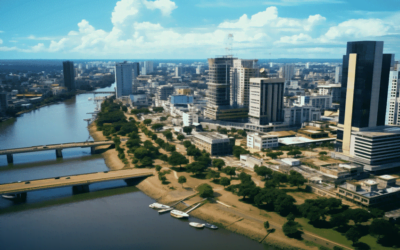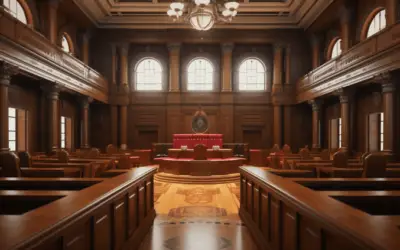Hey there, fellow drone enthusiasts! If you’re here, you’re probably as curious and passionate about drones as I am. You might be wondering about Norway’s drone laws and regulations, and that’s a pretty common concern for drone lovers.
Well, you’ve come to the right place, and I totally get where you’re coming from. Navigating the skies with your drone is exciting, but it’s essential to understand the rules to make your flights safe and enjoyable.
You’re in luck because I’ve delved deep into Norway’s drone laws to provide you with the answers you need. I’ve spent some quality time researching these regulations, and I’ve got all the details you’re looking for.
I know it can be a bit perplexing, but I’m here to break it all down for you in a way that’s easy to understand. You see, I’ve always been fascinated by drones, and I’ve made it my mission to gather the most current and relevant information to share with you.
So, if you want to soar through the Norwegian skies with your drone while staying on the right side of the law, you’re in for a treat. This article is your key to understanding Norway’s drone laws and how they apply to your flights.
We’re going to explore everything from general rules to regulations for hobbyists and commercial operators. I’ve got your back, so read on to unlock the secrets of safely enjoying the world of drones in Norway.
- Regulatory Framework in Norway
- Agencies Responsible for Regulating Drones in Norway
- Categories of Allowed Drone Flights in Norway
- Drone Regulations for Different Categories of Operators in Norway
- General Norway Drone Laws
- Local Restrictions in Norway
- Bringing Your Drone On Airplanes to Norway
- Final Thoughts on Norway Drone Laws
- Frequently Asked Questions About Norway Drone Laws
Regulatory Framework in Norway

Before we dive into the nitty-gritty of Norway’s drone laws, let’s first understand the larger regulatory framework.
You see, Norway has adopted the European Union drone laws, which means we share many of the same regulations with our European neighbors.
The European Union Aviation Safety Agency (EASA) plays a significant role in setting these rules, ensuring that drone operations across Europe adhere to certain standards. However, Norway also has its own specific regulations to account for, so let’s explore the intricacies.
European Union Drone Laws and NASA’s Role
So, what’s the deal with Norway and the European Union’s drone laws? Well, we’re part of the European Economic Area (EEA), which includes EU member states. This means that Norway has adopted many of the EU drone regulations as our own.
The European Union Aviation Safety Agency (EASA) is the chief architect behind these rules. They’ve introduced a framework that classifies drone operations into different categories based on factors like drone weight, intended use, and risk.
EASA’s aim is to strike a balance between enabling drone enthusiasts like us to enjoy our hobby while ensuring safety and privacy.
They’ve divided operations into three categories: Open, Specific, and certified, each with its own set of rules and requirements. As drone pilots, it’s essential to understand these categories to know which rules apply to our flights.
Unique Norwegian Regulations
Now, let’s talk about the regulations that are uniquely Norwegian. While we’ve adopted many of the EU’s rules, we’ve also added some specific ones to cater to our local needs.
For instance, we’ve got altitude restrictions – you can’t fly your drone higher than 120 meters above ground level. This helps ensure that our airspace remains safe and doesn’t interfere with other aviation activities.
Additionally, Norway has restrictions on flying drones in specific areas. You’ll need to be cautious around airports, military installations, and sensitive areas.
We’re all about privacy and safety here, so these rules are in place to protect everyone’s interests. Moreover, don’t forget to respect others’ privacy when operating your drone; it’s the neighborly thing to do.
So, whether you’re a seasoned pro or just starting your drone adventure, understanding this regulatory framework is crucial. It ensures that we can enjoy our drones while adhering to the rules that keep our skies safe and enjoyable for all.
Also Read: Drone Regulation in Northern Ireland 2024
Agencies Responsible for Regulating Drones in Norway

Alright, fellow drone enthusiasts, let’s get into the nitty-gritty of who’s keeping an eye on our drones up in the Norwegian skies.
Two major players are ensuring that our flights stay safe and within the law: the Civil Aviation Authority of Norway (CAAN) and the European Union Aviation Safety Agency (EASA). So, let’s break down their roles, shall we?
The Role of CAAN and EASA
First up, we’ve got the Civil Aviation Authority of Norway, or CAAN for short. These folks are like the guardians of our skies.
They’re responsible for overseeing and enforcing drone regulations in Norway. Whether you’re flying a microdrone that weighs less than 250 grams or a more substantial flying machine, CAAN’s got you covered.
They’ve categorized drones based on weight and purpose, and it’s crucial to understand these categories to know which rules apply to your flights.
Now, let’s talk about our friends at the European Union Aviation Safety Agency (EASA). EASA isn’t specific to Norway – they’re the architects of the broader European Union drone regulations.
Since Norway is part of the European Economic Area (EEA), we’ve adopted many of the EU’s rules. EASA plays a significant role in setting these rules and ensuring that drone operations across Europe adhere to certain standards.
They’ve introduced categories for drone operations: Open, Specific, and Certified, each with its own set of rules and requirements.
Accessing Official Regulations
For those of you who like to dive into the nitty-gritty details (I’m right there with you), here’s a pro tip: make sure to check the official sources for all the drone regulations in Norway.
CAAN’s website is your go-to place for staying updated on the latest rules. They provide comprehensive information on drone categories, registration, training, and more.
If you’re looking for insights into the broader European regulations set by EASA, check out their official resources too.
It’s always a good idea to go straight to the source when you’re dealing with drone laws. That way, you’re in the know, and you can enjoy your flights without any legal hiccups.
So, whether you’re a newbie or a seasoned pro, remember to bookmark these sources – they’re your best friends in navigating the world of drone regulations.
Also Read: Drone Regulation in North Macedonia 2024
Categories of Allowed Drone Flights in Norway

Let’s take a deep dive into the different categories of drone flights you can embark on in Norway. The country has set up a system to classify drones based on the level of risk associated with their operations.
Knowing which category your drone falls into is crucial because it dictates the rules and requirements you must follow. So, whether you’re a recreational flyer or thinking about going pro, here’s the lowdown.
Open Category
Characteristics and Rules for Drones in the Open Category
Alright, folks, let’s kick things off with the Open Category. This one’s for the drones that pose a low level of risk during flight. In this category, you don’t need prior authorization from the authorities, which makes life a bit easier.
But there are still some rules to follow. Your drone’s total takeoff weight should be less than 25 kilograms, and it must always be in your visual line of sight. No binoculars or fancy gadgets are allowed for tracking here.
Also, keep it below 120 meters above the ground, and don’t even think about dropping anything from your drone. Safety first!
Subcategories A1, A2, and A3
The Open Category isn’t one-size-fits-all. It’s further divided into three subcategories: A1, A2, and A3. Think of these as different flavors with unique requirements. In the A1 subcategory, you can fly your drone over people but not over gatherings.
A2 lets you get closer to people, and A3 requires you to keep a good distance from anyone around. Each subcategory has its own set of conditions, so understanding which one your activities fall under is key.
The good news is that if you meet the relevant requirements, you can get flying without the need for operational authorization.
Specific Category
Regulations for Drones in the Specific Category
Now, let’s chat about the Specific Category, which is where things get a bit more interesting. Here, the risk level is moderate, so you’ll need to jump through a few more hoops. Drone flights in this category require authorization before taking off.
Permission is granted based on your operational risk assessment and the mitigation measures you’ve got in place.
There are some standard scenarios where an operator declaration is enough, but it’s still a more structured approach compared to the Open Category. Keep in mind that this is where you’ll need to plan your flights more meticulously.
Certified Category
Strict Requirements for Drones in the Certified Category
Now, let’s talk about the big leagues—the Certified Category. This is where you’ll find the big drones with the potential to carry people.
Think of it as a different ballgame altogether. Drones in this category need certification, and the remote pilot must be licensed.
The safety and regulatory standards here are top-notch because, well, people’s lives are on the line. Flying in the Certified Category is a whole different level of responsibility.
So, if you’ve got ambitions of carrying out missions with human cargo, prepare for rigorous training and certification processes.
The Need for Certification and Licensed Remote Pilots
Here’s the real deal – if you want to fly a drone that can carry humans, you’ll need to be certified, and your drone needs to pass some rigorous tests.
It’s all about ensuring the highest safety standards. On top of that, the pilot must hold a remote pilot certificate.
This is not your typical drone flight; it’s like getting your pilot’s license. And trust me, it’s not something you can breeze through. Safety is paramount, and these strict requirements reflect that.
So, there you have it—the breakdown of Norway’s drone flight categories. Depending on your drone and your plans, you’ll need to figure out which category fits your operation. But remember, no matter the category, safety, and adherence to regulations should always be your top priorities.
Also Read: Drone Regulation in Nigeria 2024
Drone Regulations for Different Categories of Operators in Norway

Alright, folks, let’s dive into the world of drone regulations in Norway. The rules aren’t one-size-fits-all; they vary based on your category of operation.
Whether you’re a hobbyist, a commercial operator, a tourist, or even part of a government agency, there’s a set of guidelines tailored to your specific drone endeavors. Let’s break it down.
Hobbyists
Rules for Hobbyist Drone Operators
So, you’re a drone enthusiast looking to have some fun in Norway’s skies? Great! But before you take off, there are a few things to keep in mind.
First and foremost, you’ll need a hobbyist drone pilot license. It’s not as complicated as it sounds, but it ensures you’ve got the basic knowledge to operate safely. And don’t forget to register your drone if it weighs over 250 grams or has a camera.
Registration is a breeze and helps authorities keep tabs on the drone community. While you don’t need a Drone Remote ID, having it won’t hurt. And, though drone insurance isn’t mandatory, it’s a smart move to protect your investment. So, go ahead and take to the skies, but make sure you’re following the rules.
Commercial Operators
Regulations for Commercial Drone Operators
If you’re considering using drones for commercial purposes in Norway, there’s a bit more red tape to navigate. First things first, you’ll need a commercial drone pilot license.
This involves more in-depth training, ensuring you’re well-versed in the complexities of commercial drone operations.
Your drone will also require registration, no matter its size or camera capabilities. Here’s the catch, though: your drone needs to meet certain technical requirements outlined by the authorities.
Safety is paramount when operating commercially, and these rules are designed to ensure just that. Remember to get the necessary permissions from the Civil Aviation Authority of Norway before you venture into controlled airspace.
Tourists/Visitors
Rules for Tourists and Visitors Operating Drones
If you’re a tourist or visitor planning to explore the beautiful Norwegian landscapes with your drone, there are some rules you should know.
Just like the locals, you’ll need to adhere to the guidelines outlined for hobbyists. That means having a drone pilot license and registering your drone if it’s over 250 grams or equipped with a camera.
Don’t worry; your remote pilot certificate from your home country or another EASA member state is valid in Norway.
But if you’re not registered yet, you’ll need to do so either in your home country or Norway, depending on your drone’s category. Keep in mind the no-fly zones near airports and heliports, and always maintain a safe distance.
Government Operators
Regulations for Government Agencies Operating Drones
Government operations come with their own set of rules, even in the drone world. The good news is that government drone flights are allowed in Norway.
However, you’ll need a government drone pilot license to operate one. Just like the other categories, you’ll have to register your drones, but you’re exempt from the need for a drone Remote ID.
Drone insurance isn’t mandatory for government operations, but it’s always a good idea to have some coverage for any unforeseen situations.
So, if you’re part of a government agency in Norway, you can use drones for various purposes, from surveillance to research, but do so while respecting the rules in place.
Also Read: Drone Regulation in Niger 2024
General Norway Drone Laws

Alright, folks, here we are, ready to unravel the core drone laws that apply across the board in Norway. It doesn’t matter if you’re a hobbyist, a commercial operator, or part of a government agency; these are the fundamental rules you need to follow. So, let’s get into the nitty-gritty of these regulations.
Essential Drone Laws in Norway
Norway has laid down some fundamental drone laws that every operator, regardless of their category, must abide by. First up, there’s the altitude restriction. Your drone should not fly higher than 120 meters above ground level.
This rule is in place to ensure the safety of manned aircraft and avoid any potential collisions. Now, speaking of safety and respect for others, your drone needs to maintain a distance of at least 150 meters from congested areas, which typically include cities and towns.
Flying over people, large crowds, or assemblies is also a no-go. And remember, your drone must always stay within your visual line of sight; binoculars and other fancy gadgets don’t count.
Privacy is essential, so don’t use your drone to spy on your neighbors or anyone else, for that matter.
Flying your drone over private property without the owner’s permission is strictly prohibited.
It’s all about respecting others’ privacy and preventing any unwarranted intrusion. Lastly, be a responsible drone operator – steer clear of sensitive areas like government facilities or military installations.
Drones and camera drones are a big no-no in these places. The idea is to maintain security and safety.
Adherence to Basic Rules
No matter who you are—a hobbyist capturing stunning landscapes, a commercial operator inspecting properties, or a government agency conducting research—it’s crucial to follow these fundamental rules.
These rules aren’t meant to dampen your drone adventures; they’re here to make the skies safer for everyone. So, whether you’re flying for fun, work, or official business, keep these basic laws in mind and enjoy your drone experience in Norway while respecting the regulations.
Also Read: Drone Regulation in Nicaragua 2024
Local Restrictions in Norway

Now, if you’re planning to fly your drone in the captivating city of Oslo, there are a few local restrictions that you should be aware of.
While Norway has its own national drone laws, Oslo, being the capital and all, has a few unique regulations of its own. So, before you send your drone soaring through the picturesque landscapes of Oslo, take note of these local restrictions.
Non-Flying Areas in Oslo
Oslo is a bustling city with some fantastic sights, but not all of them are open to drone enthusiasts. In the heart of Oslo, there are non-flying areas that drone operators need to steer clear of. To give you a clearer picture, places like The Opera, Tjuvholmen, Akershus Fortress, and St.
Hanshaugen and Grünerløkka are on the no-fly list. These are typically crowded or sensitive areas where drones could pose a risk or invade people’s privacy.
So, while you might be tempted to capture these urban wonders from above, it’s a hard pass when it comes to drone flights. These local regulations aim to ensure safety and privacy in these vibrant neighborhoods.
Stay Informed About Regional Restrictions
Oslo’s local restrictions may not be as extensive as the national laws, but they’re still important to follow. If you’re planning to fly your drone in the city, it’s your responsibility to stay informed about these regional regulations.
Knowing where you can and cannot fly your drone in Oslo ensures that you’re not only on the right side of the law but also respectful of the local community.
These local restrictions are all about striking a balance between enjoying your drone hobby or work and being considerate of those living in and visiting this marvelous city.
Also Read: Drone Regulation in New Zealand 2024
Bringing Your Drone On Airplanes to Norway

If you’re a drone enthusiast planning to jet off on an adventure, you might be wondering how to bring your trusty flying companion with you.
Traveling with drones on airplanes involves a few essential guidelines to ensure a smooth journey. So, let me share some insights to make your drone-inclusive travel hassle-free.
Drones as Carry-On Luggage
When it comes to bringing your drone on an airplane, the rule of thumb is to keep it with you as carry-on luggage. This is not just a suggestion, but a practical necessity.
Airlines have specific guidelines and limitations when it comes to carrying drones, and they often require you to bring them as part of your hand luggage.
Why? Well, the cargo hold of an airplane can expose your precious drone to extreme temperatures and rough handling.
By keeping it with you in the cabin, you’re not only ensuring its safety but also complying with airline regulations. This extra care helps prevent any mishaps and guarantees your drone arrives at your destination in perfect shape.
The Montreal Convention and Liability
Now, you might be wondering about the legal aspects of traveling with your drone. This is where the Montreal Convention comes into play.
It’s an international treaty that addresses the liability of airlines when it comes to lost, damaged, or delayed baggage, including carry-on items like drones.
However, here’s the catch: the Montreal Convention sets a liability limit of approximately $1,000 USD for airline losses.
So, if your drone is worth more than this amount, which is often the case, relying solely on the airline’s coverage isn’t sufficient. This is why it’s essential to consider additional insurance for your drone, especially if it’s a high-value piece of equipment.
Handling Drone Batteries
One crucial aspect of traveling with your drone that’s often overlooked is how you handle the batteries. Drone batteries, particularly lithium-ion ones, are considered “dangerous goods” by airlines due to incidents of these batteries catching fire.
To comply with airline safety regulations, always pack your drone batteries in a medium-sized Lipo Battery Bag, ensuring they’re part of your carry-on luggage.
This special bag is designed to contain any potential battery-related issues and keep your fellow travelers safe.
Neglecting this step could lead to the airline seizing your batteries, fines, or even being denied boarding, which is the last thing you want on the day of your journey.
So, remember to keep your drone batteries in check to make your drone-carrying experience hassle-free and secure.
Also Read: Drone Regulation in Netherlands 2024
Final Thoughts on Norway Drone Laws

And there you have it, fellow drone enthusiasts—the ins and outs of Norway’s drone regulations.
While it might seem like a lot to take in, understanding these rules is crucial to ensuring safe and responsible drone use in this beautiful country. So, let’s wrap it up and emphasize the key takeaways.
Above all, safety and responsibility are the pillars of drone operations in Norway. Whether you’re a hobbyist, a commercial operator, a tourist, or a government agency, abiding by the rules ensures not only your safety but the well-being of everyone around you.
With altitude restrictions, privacy considerations, and guidelines for flying in sensitive areas, it’s clear that Norway is dedicated to protecting its citizens and its natural beauty.
Now, as much as I’d love to chat more about drones, remember that drone regulations can change, and the information provided here might evolve.
So, for the most up-to-date details on Norway’s drone laws, make sure to visit the official Civil Aviation Authority Norway (CAAN) website. They’re your go-to source for the latest rules and regulations, ensuring that you’re always in the know.
As you embark on your drone-flying adventures in Norway, may your flights be safe, your footage stunning, and your respect for the rules unwavering.
Here’s to soaring the Norwegian skies responsibly, capturing the beauty from above, and enjoying the thrill of drone flight.
Frequently Asked Questions About Norway Drone Laws
1. Can I fly my drone over people or large crowds in Norway?
No, flying your drone over people or large crowds is not allowed in Norway. The regulations prioritize safety, and to ensure that, you should maintain a safe distance from individuals and gatherings. Always put safety first and avoid flying over people to prevent accidents and protect their privacy.
2. What are the altitude restrictions for drones in Norway?
Drones must not be flown higher than 120 meters above ground level in Norway. This restriction is in place to avoid potential conflicts with manned aircraft and to ensure safe and responsible drone operations.
3. Are there specific areas I cannot fly my drone in Norway?
Yes, there are several restricted areas where flying drones is prohibited. These include airports, military installations, and sensitive areas. Additionally, drones must not be flown over private property without the owner’s permission to protect privacy rights and prevent intrusions.
4. Do I need a license to operate a drone in Norway as a hobbyist?
Yes, even as a hobbyist, you are required to obtain a license to operate a drone in Norway. This includes completing a theoretical and practical training course, passing an exam, and obtaining a drone pilot certificate. Following these steps ensures that you have the knowledge and skills needed to fly safely.
5. What should I do if I want to fly my drone in Oslo, Norway?
If you plan to fly your drone in Oslo, be aware that there are non-flying areas, including places like The Opera, Tjuvholmen, Akershus Fortress, St. Hanshaugen, and Grünerløkka. Always check for local regulations and restrictions specific to your location before flying your drone in Oslo or any other region in Norway to ensure you comply with the rules.













